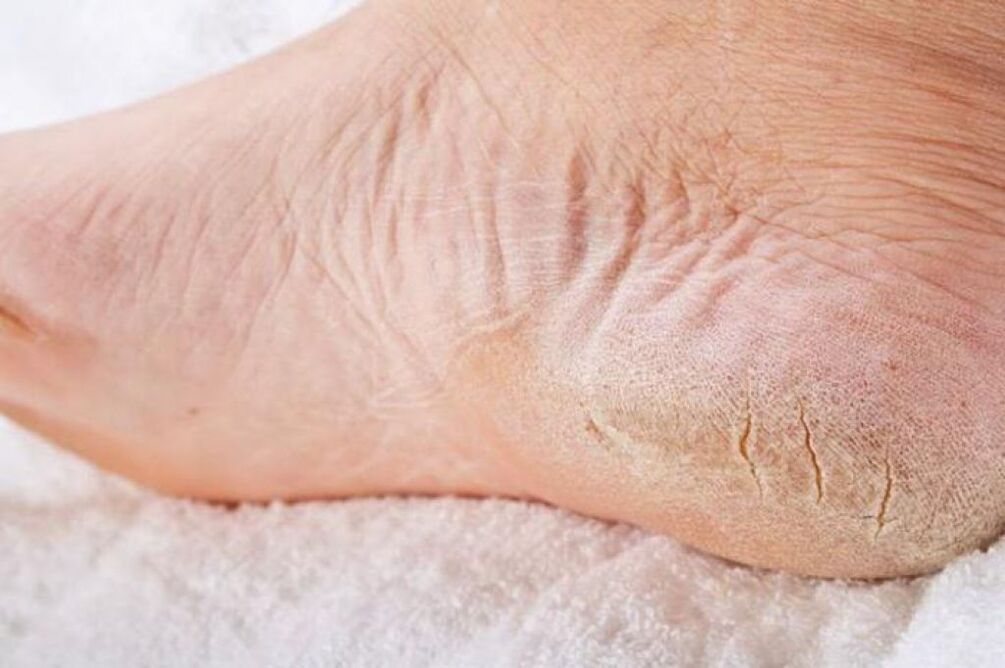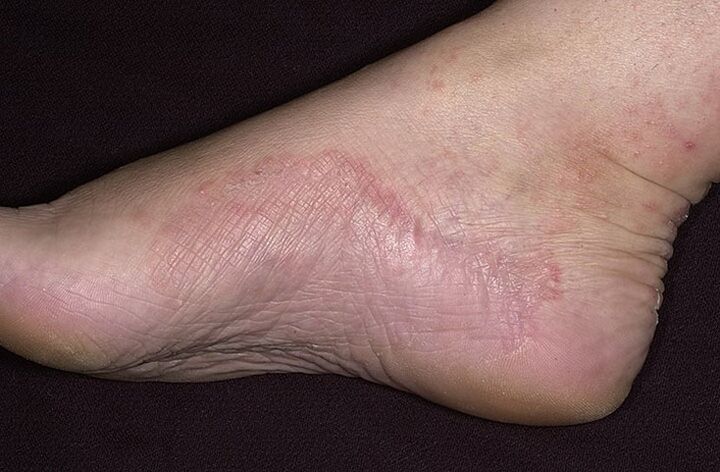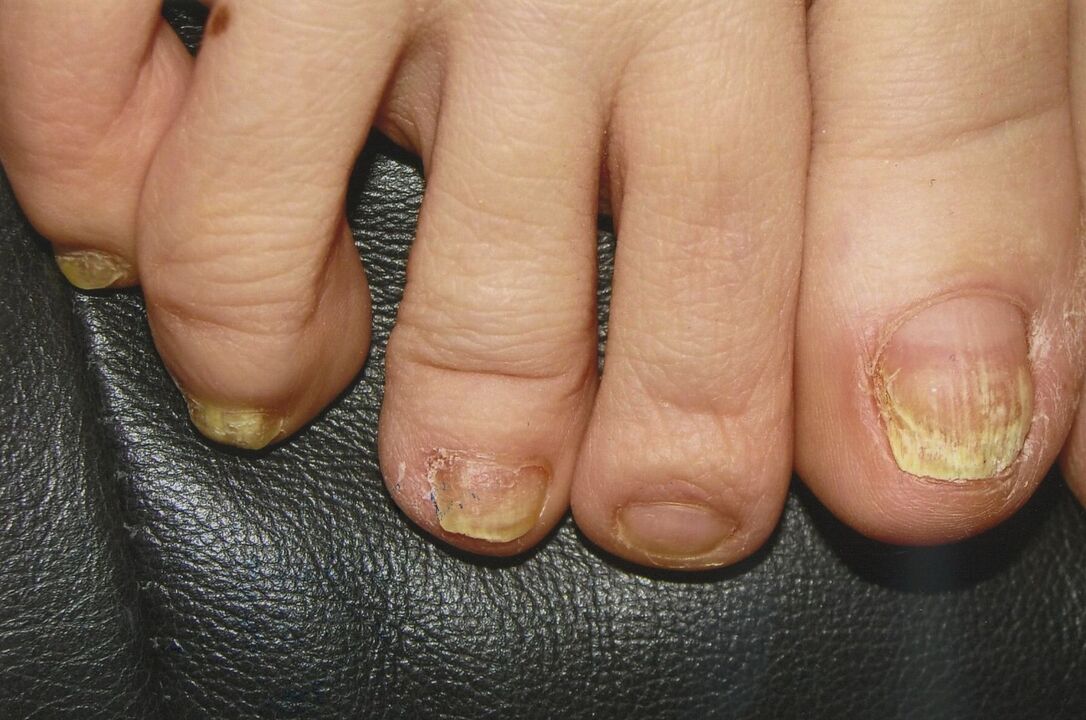
One of the most common foot diseases is foot fungus, or as it is called, mycosis. According to medical research statistics, several types of lesions on the skin and nail plate have been identified.
The main thing is to immediately see a doctor when the fungus appears to have time to protect your body from bacteria and everyone around you.
What does toenail fungus look like?
Many have heard that there is a disease such as mycosis, and it manifests itself in almost 80% of the population, but rarely does anyone face this problem personally. There are cases where those who are infected, simply do not pay attention to the symptoms, may not start treatment on time, which leads to bad consequences. But besides the infected body, the people around him can also suffer.
You can study in more detail the degree of localization of bacteria on a person's feet using photos, but it should be noted that in addition to visual effects, there are symptoms that will also differ in the level of infectivity of the body.

The initial phase of the manifestation of foot fungus will not be very noticeable, but the burning sensation, itching and small areas of redness may already indicate that the fungus has started its active activity.
The next phase is more serious and involves both the feet and the nail plate. Nails begin to change (become yellow, gray, thicken). Also, small white stripes and spots may appear on the nails, which is usually a good reason to consult a doctor for a diagnosis.
The last phase is severe peeling of the skin, the nail slowly begins to move from the hole, ulcers and ulcers may appear. All this leads to the complete destruction of the upper layer of the epidermis, internal cracks begin to be exposed.
This is what foot mycosis looks like at each stage of development. And as you can see from the photo, the consequences of fungal infections on the nail plate and feet can be depressing.
Fungus on the toes
A fungal infection of the skin between the toes is called athlete's foot, and the fungus itself is called Tinea pedis. This fungus is produced through contact with an infected person, or by using other people's hygiene products.
Disease symptoms
- The skin between the fingers becomes very dry and exposed, small scales appear;
- The appearance of small purulent blisters with fluid on the skin, and if one of them bursts, an unpleasant sensation appears on the skin;
- The nail plate changes, the structure becomes more fragile;
- There may be an unpleasant smell on socks and shoes due to the manifestation of fungi; it is quite sharp and specific.
According to the stage of fungal bacterial development, epidermophytosis can occur in four phases:
Lightweight At the first signs of peeling on the feet, you should immediately see a dermatologist. This is the first sign of fungus. Further development of bacteria occurs at the level of the fingers, between the fingers and on the nails. The following symptoms are redness of the skin, small cracks on the heels and feet, itching and burning at the site of larger localization of the disease.
Squamous-hyperkeratotic The squamous-hyperkeratotic phase of the disease is caused by slight swelling of the skin of the feet, which also causes severe peeling of the feet and the skin between the toes.
Severe itching and burning sensation spread over the entire leg area, including the nails. The color of the nail plate becomes from light yellow to gray, which involves the destruction of the top layer of the plate itself.
The hyperkeratotic phase of the fungus has the following symptoms: a rash all over the skin of the feet, with red to blue blisters, which will then peel off badly and cause pain when walking.
If you do not consult a doctor, the infection will cooperate and turn into a serious infection. This whole process is accompanied by an unpleasant smell from the feet.
Intertriginous phase is characterized by the appearance of deep cracks on the heel, accompanied by pain, and the appearance of erosive ulcers. The pain increases significantly, which prevents the person from standing on his feet normally.Dyshidrotic this phase is characterized by small purulent blisters that develop at an extraordinary speed, covering the entire area of the feet and toes in just a few days. Pustules can open on their own, thereby causing red erosions to appear. After the skin dries a little, some fluid may be released from the wound.
The main thing is, when fungus appears on the feet, immediately understand the symptoms and consult a dermatologist in time. Fungal symptoms and visual inspection should give a definite picture of the process taking place on the feet. But you should not start the medicine yourself, because this usually leads to ineffective consequences, which creates a stronger location of the disease.
To prescribe the correct course of treatment, the doctor needs to know the development phase of the fungus and identify the type of pathogen. But before that, the patient must undergo a diagnosis, as a result of which the overall picture of the course of the disease will be clear.
How to treat foot fungus
It should be remembered that depending on the phase of the disease, treatment will be prescribed, which must be comprehensive.
Before starting treatment with local drugs, it is necessary to relieve the inflammatory process and the phenomenon of keratinization.
To help get rid of unwanted fungal bacteria, you should know the correct procedure:
- For external use, you should use creams, ointments, sprays, solutions, varnishes;
- Mandatory course of taking antifungal drugs;
- For severe burning and itching, you should buy sedatives to relieve pain symptoms;
- Since the immune system is weakened when fighting fungus, you need to take a course of vitamins and minerals, which will help the body fight the infection with greater strength;
- If a concomitant infectious disease occurs, the dermatologist will prescribe a course of antibiotic treatment.
To determine a specific drug, the dermatologist must know the full picture of the course of mycosis; the age of the infected person, the response of the fungus to certain drugs, as well as the degree of infection in the foot area must be taken. count
Most medical reference books can clearly show all phases of the development of toenail fungus in the form of photos with a description of the symptoms, so that a person can determine them independently. After a visual examination and comparison with the mycosis travel picture, the patient should immediately seek medical help from a specialist.
Photo





















